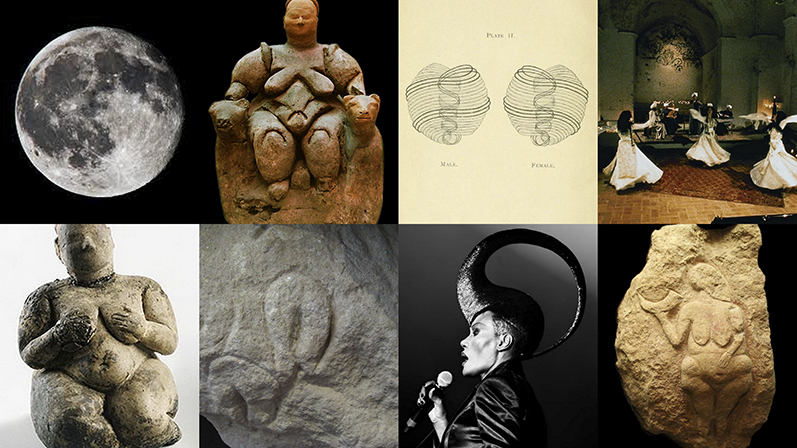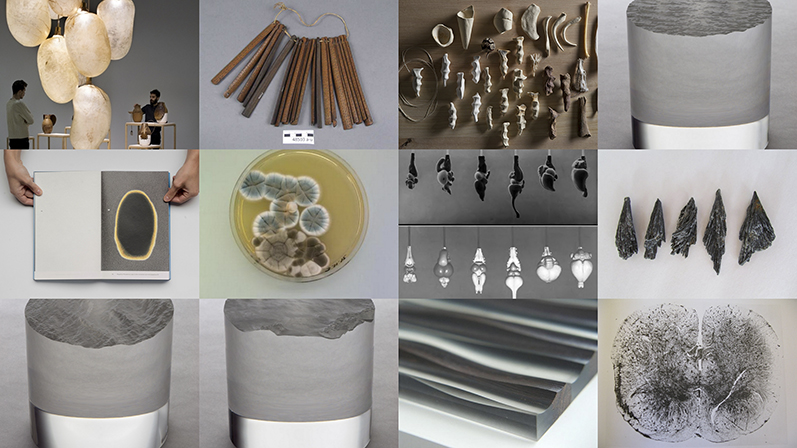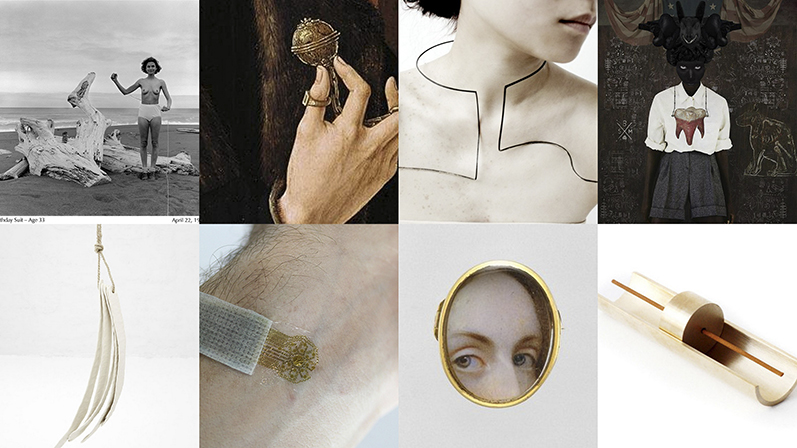

Cycles of the body
⏤ Design research on "Communication of mood between cycles and modernity" BA dissertation awarded distinction (SWPS, 2016).
Excerpt:Modern Western culture has developed a system of interpersonal communication dominated by visual perception, significantly shaping our understanding of the world and reinforcing societal pressures surrounding personal image. The prioritisation of visual stimuli has contributed to the construction of rigid norms of beauty, identity, and self-presentation, which often disconnect individuals from a deeper, multi-sensory engagement with reality.
This work explores the cyclical nature of time and its cultural perception, particularly through the lens of female embodiment. The dissertation examines how time has historically been understood in different cultures—as linear, cyclical, or even multidimensional—and how these interpretations influence personal and collective experiences. In contrast to the Western emphasis on linear progression and productivity, many traditional and indigenous cultures recognise time as a cyclical phenomenon, intimately connected to biological rhythms, nature, and seasonal shifts.
A key focus of the research is the taboo surrounding menstruation and the cultural constructs that have shaped its perception over time. While the female body inherently operates in cycles, contemporary societal norms often seek to suppress, regulate, or mask these natural rhythms, favouring an artificial sense of control and predictability. This suppression is deeply rooted in historical, religious, and philosophical narratives, which have framed menstruation as something to be hidden or managed rather than understood and embraced.
The project translates these theoretical explorations into a sensory-driven design intervention, using jewellery as a medium. Inspired by the physical connection between the body and objects, the work integrates scent as a form of non-verbal communication, creating a collection of wearable artefacts that correspond to different phases of the menstrual cycle. Each piece embodies a distinct mood, function, or symbolic meaning, aiming to redefine how we engage with bodily rhythms through design.
The research also critiques modern notions of time management and control, particularly in the digital age, where time has become a commodity to be measured, optimised, and consumed. The shift from cyclical to linear and now fragmented, task-oriented time perception has led to an increasing disconnection from natural bodily rhythms and environmental cycles. This raises critical questions about how modern technologies shape our experience of time and self-awareness, and whether design can facilitate a more intuitive, embodied relationship with time.
Through a fusion of historical analysis, cultural critique, and design experimentation, this dissertation challenges prevailing narratives and invites a reconsideration of how we experience time, the body, and sensory communication in contemporary society..
CULTURAL CHALLENGES
I live in so called western culture and there is one word that describes it: ACCESSIBILITY.
It’s a 24/7 world, where the social norm is – to wash away your natural scent and to wear perfumed one – to mark your social status.
Most of the products, promise to give us freedom, by supporting our efficiency and access around the clock. Paradoxically, it becomes more and more distant from the feeling of your body and its natural rhythm. By analysing this phenomenon from my own perspective – woman of childbearing age – it seems that I should be available 24/7, constantly active, rested, hiding my weaknesses or volatility of the mood. This is far from the truth and has nothing to do with biology.
MOODBOARDS AND RESEARCH
I live in a world created by white, privileged, non-menstruating gentleMEN. It’s a 24/7 world, where the social norm is to wash away your natural scent and to wear perfumed one. To mark your social status. It’s a world where emotions should be controlled and sexual accessibility is a currency.

It’s a world filled with products which help you to be active, effective, beautiful and to smell good… but it comes with a lack of self observation, awareness of natural body cycles. It’s a culture of denying instead of following the natural rhythm, a time of strict separation between mind and body, where the body is treated as a tool and mestruation blood is shown as a blue gel.
I’m privileged that I don’t have to hide in menstrual huts, [in some cultures – places created to isolate menstruating women] that the battle for gender equality gave me a wide freedom of choice. But I do feel ashamed that every month of my grown up life I was trying to reach existing standards, instead of creating my own. I should create those which consider the full spectrum of emotion: pain and weakness, happiness and unhappiness, openness and isolation, all on the same level, respectfully, without feeling guilty.
PROCESS CHALLENGES
First of all, I was confronted with the challenge of communication. While I was using certain words: Menstruation, Ovulation, Premenstruation. I’ve made everyone to feel unnatural, embarrassing and uncomfortable. The body language, small gestures and voice timbre was telling me more than the words. And this made me even more curious.

It took me just one day to get from my inspiration – the life cycle of the star – to its connection with my natural body cycle. But the hardest part came after that. I was asking myself: “How can I find the proper field, form and language to describe it?“
It took my almost a one year to created basic system of self-observation fragrance. I matched up jewellery – which is close to the body, and the smell as a communication code, because of the strong associations with so called women’s world. I made jewellery as a distributor of the scent. Different aromas are used as a tool, not as perfumery ornaments. The visual aspect is result of: used techniques (casting, lost-wax, manual finishing), specifics of materials (resin, natural oils and waxes, cords) and analysis of the female cycle (number and volume of the objects in one set). RITU is designed for dialogue with our perception of time and physical rhythms, as well as for awareness of distinction between the sexes, in the era of striving for their equality.

COMMUNICATION
I had been self-recording during the process, that’s way I used self-portrait photography to emphasise intimate aspect of the project, even if it’s not perfect. Because it’s not perfect.
I often apply auto-ethnographic practice methods such as recordings, diaries, creative writing and filmmaking to document both the author’s and invited stakeholders’ journey through the work, charting the personal and physical benefits – and accompanying challenges.

I can be much more effective when I get the rest my body demands, instead of hiding in my own contemporary menstrual hut pretending that I’m a gentleMAN not a gentle-WOMAN. I can make My Rhythm and own it, not let it own me.

Distinction:
SWPS
Talks:
Design Indaba









